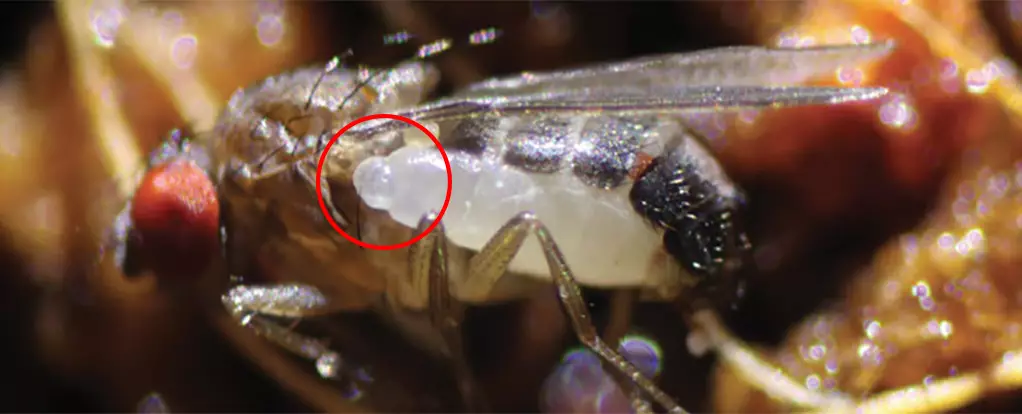The natural world constantly unveils surprises, challenging our understanding of ecology and species interactions. Recently, a team of biologists made a remarkable discovery that has broadened our perception of parasite-host dynamics. This finding revolves around the newly identified wasp species, Syntretus perlmani, discovered within the abdominal cavity of an adult fruit fly. Such an unusual habitat for a wasp raises questions not only about the lifecycle of this parasitoid but also about the broader implications for ecological interactions and research potential.
The journey to uncovering Syntretus perlmani began in March 2023, when researchers stationed in Mississippi found something entirely unexpected while investigating nematode infections in Drosophila flies. As they sifted through their catches of over 6,000 flies, nestled in the abdomen of a male fruit fly, they discovered wasp larvae. This pivotal moment prompted an extensive 11-month study to determine the prevalence of these larvae across various states, including Alabama and North Carolina.
What was particularly striking about their findings was the low infection rate; less than 1% of the flies harbored wasp larvae. Seasonal fluctuations saw this rate oscillate between 0.5% and 3%. Interestingly, even though the researchers examined female flies as well, only one instance was recorded of a wasp larva within them. This stark difference highlights a unique adaptation in the wasp’s reproductive strategy—favoring adult flies as hosts over juvenile ones, suggesting an ingenious evolutionary path offering certain advantages.
Perhaps the most intriguing aspect of Syntretus perlmani is its fascinating lifecycle. Once the female wasp lays her eggs within a fruit fly, the larvae begin developing inside, much like other parasitoid wasps. However, the remarkable twist is that the larva does not confine itself to a juvenile host but instead grows within an adult fly. This potential host choice may decrease competition for resources from other parasitic organisms, a strategic advantage in their survival game.
Researchers observed that after a mere 18 days of development time, these larva essentially act like voracious guests, ultimately leading to the host’s demise. The larvae wiggle and squirm their way out, reminiscent of classic “chestburster” scenes from horror movies, before pupating and transforming into adult wasps ready to propagate the species once more. The researchers noted that female wasps initiate this cycle almost immediately after emerging, ovipositing into new hosts within 24 hours—a relentless pace that ensures the continuation of their lifecycle.
The discovery of Syntretus perlmani unveils significant implications for ecological research and understanding parasitoid behavior. Their habitat choice—unlike their relatives, who preferentially parasitize juvenile insects—could extend our knowledge regarding host immune responses and various ecological factors. Adult flies often exhibit less robust immune defenses against these wasps, perhaps allowing for easier establishment of the parasitoid.
Additionally, since this new wasp species can be readily found using common backyard traps, biologists envision its role as a model organism in various laboratories. The relationship between Syntretus perlmani and the widely studied Drosophila melanogaster presents exciting prospects for future investigations in genetics, evolution, and behavioral ecology. The rapid reproduction rate of fruit flies and their well-mapped genomes complement the study of this parasitoid.
The discovery of Syntretus perlmani underlines the marvel of biodiversity and the intricate webs of life that often go unnoticed. This unusual wasp lurking inside adult fruit flies not only challenges existing paradigms on host selection but also promises to offer significant insights into ecological mechanisms and evolution. As biologists continue to probe the affiliations within the animal kingdom, such groundbreaking discoveries will undoubtedly inform our understanding of life’s complexity. The narrative of this wasp entangled in the lives of fruit flies is but a fragment of the larger story of nature, beckoning us to delve deeper into our world’s unexplored nooks and crannies.

Leave a Reply